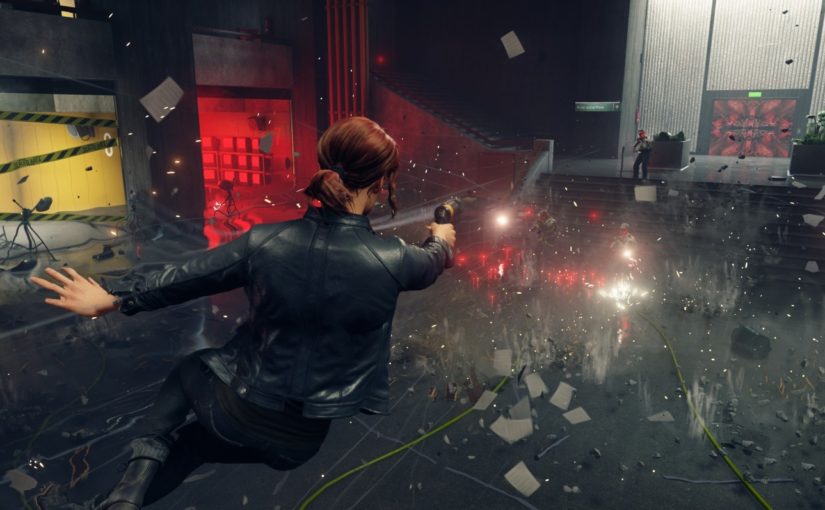They say hindsight is 20/20. Not surprisingly, the mistakes we made seem idiotic in retrospect, and the mistakes made by others that we may have made at that stage of our lives, seem moronic as well. This is not to justify what was done, or even to sympathize more than one would ordinarily do. Rather, this realization that what was done and what is being done is moronic, carries with it an uncomfortable realization that we are part of a system that produces such mistakes. And more uncomfortably, we are perpetuating it.
Academics call it systemic injustice, or systemic bias, or systemic something. When things get really bad and people go into depression, it’s systemic violence. Then many people use it to shift the blame from themselves onto whatever is the current state of society and state. Individual culpability changes into a more comfortable collective culpability, and like public property, nobody bothers to take the blame for it.
All of this makes headlines if the issue takes on a violent form. A suicide, a rape or denial of opportunity. We discover that behind a suicide lay an abusive relationship, behind a rape a rape script and toxic masculinity, and behind denied opportunity, cynical caste-class nexuses. But this article is not about these. I have nothing in my past, nor my present (and hope to God, nor in my future) that warrants such Marxist analysis.
Instead, I want to speak about an article that was rejected, and what followed thereafter. Yes, I wasn’t bluffing when I wrote the previous paragraph – it is really just an article and correspondence between the editor (me) and the author. Before you write me off as an academic dotard residing in his chosen ivory tower, let me add some context.
It so happens that many moons ago, when I was still a student and an acolyte in the world of academics, I’d taken up content writing as a freelancer. It provided much needed pocket-change to impress my girlfriend, and allowed me to fund some of my geeky passions. But every job, every occupation, no matter how freelance or part-time, comes with its own ideological baggage. Content development had its own fair share of predatory contractors and clients. These guys went the extra mile to drill into you that capitalism of the freelance kind was the ultimate mantra for success. Real research was research done for producing content, because that was what people read and used to make informed decisions. Who reads academic articles in pricey journals anyway ?
It is not difficult to become enamoured of this ideology. It was amply evident that working for some of these clients would not get me anywhere near where they themselves were. One of them would sign his emails with “Sent from an iPad”. I did some simple math, and realized that it would take years, working 24 hours a day, to make enough to afford even the last generation iPad. But then I would persuade myself that if I did gather that much experience, I would become a contractor myself. Exploited would become exploiter and dream-seller in turn.
What is safe to say is that all of this created a disdain for academics, and a deep cynicism about the high-brow Marxist and Leftist debates that surrounded me in my university and even outside it. But it also made me wonder if research really was so difficult. After all, research articles are content right ? So if I’m researching for a treadmill review, I can also research for the Palestine crisis and write an article. What difference did it make as long as I maintained quality and adhered to the TAT ?
I never took this line of thought far enough to actually produce academic articles. But I did write essays, SOPs and question banks, all of which were close enough to the world of academia that the distinction between academics and content writing would get blurred. I was confident that I could quote some of this work when asked about my academic output, even if I had to add a caveat that it was done freelance and not as part of a reputed institution.
Fast forward to the present, and I have left those pastures behind. I still carry some of that cynicism towards research, especially when I see the same concepts about spread of Christianity in Meghalaya in the colonial period taking up the vast majority of at least half a dozen papers in one of a dozen parallel sessions of the Indian History Congress. Or the latest opinion about how academics would be forever changed in the post-Covid world, which incidentally matches the previous five opinions I’ve cared to listen to.
But I’ve also realized that research needs to be done not because it brings any specific profit, but because you need truth and facts to make any sort of progress. Ignorance causes us to make the same mistakes again and again, and demagogues promote whatever they like while profiting from the misery that inevitably results. Thus, today when I work on the role of newspapers and the ways in which editors and the powers that be crossed paths, I do so not because I’m going to make loose change in the off chance that some newspaper editor approaches me with the request to write a guest piece, but because these interactions have a direct implication on how free and fair our access to information is, and how our identities, ideas and emotions are shaped.
But my ideals aren’t what this article is about. To return to the topic at hand, my academic wanderings have resulted in me taking up the editorship of a small journal. It’s not important to note the name, nor is it important to note that I am part of the editorial board and not the Chief Editor. I’m the one who gets the work done, and that’s what matters. Me and another person. But on my blog and in my words, I’ll allow myself some hubris.
In course of our latest call for papers, we received a paper. The subject or field doesn’t matter – suffice it to say that it was related to my field but outside my area of expertise. I really don’t enjoy reading articles with Sherlock’s looking glass, and used the subject matter as an excuse to send it to the relevant editor.
Scrutiny and then review proceeded over the course of the next few months. During this time, the author wrote to me multiple times, inquiring about the status of the journal. By me, I mean the official mail of the journal. So she wrote to the official mail of the journal, and the editorial board (aka me and the other person) wrote back that things were being processed.
It was processed, and thrown out. The review turned out to be unfavourable, and was recommended for rejection. This was duly intimated. Now I’ll be honest – I’m not someone with a lot of experience sending rejection mails. But I did try to be as polite and professional as possible.
The author wrote back inquiring about reasons for rejection. It is a standard practice that reasons given for rejection are never too specific. No one wants to become the middleman between a reviewer and an author forwarding one’s comments to the other. At a more ideal level, rejections are supposed to be final to maintain the sanctity of the review process itself. Hence, asking for reasons beyond what was provided is an exercise in futility.
But it wasn’t inherently wrong. What was more problematic, however, was her second query. To quote her –
“what is the academic grounds (sic) ? Is it regarding my job position factor/qualifications ? As it is saying there are no scope for modifications ?”
Ehh what ?? How does her job position (about which I gave a rat’s ass anyway) affect her ability to publish in a journal ? Rather surprisingly (or unsurprisingly), this mail was followed by one I received today –

(see attached image).
I was dumbfounded by the mail. It was bad enough that she should assume that publishing in a journal was only for those with specific job positions. But what was even more alarming was that she would consider a content development position as eligible! As she clearly mentions, she considers this job to be “academic” in nature!
To begin with the most obvious problem – she is trying to persuade the editor that her paper deserves a second chance due to changed circumstances. What those circumstances are is secondary, but to believe that she could just ask for the article to be considered again when it has already been rejected points to some deep rot in our academic mindset.
From a very young age, we are taught that if you can carry enough recommendations and have enough connections (including degrees, certificates and job titles), it will matter more than the actual content you produce (I use “content” on purpose here). This mindset is carried as one gathers more and more baggage rather than improving intrinsic writing and analytical skills. Not surprisingly, when she did ask for a reconsideration, it was not a review due to any possible angles or matter that may have been overlooked or missed, but because she did not have the relevant job position!
This was followed up by the claim that she was working in content development. I have washed out the name of the company because I am sure it is one of the many exploitative ones that give you anywhere between 30 to 40 cents for every dollar you make for them. But be that as it may, she followed it up with the idiotic claim that it was an academic job.
This harks back to my own content writing days. As I mentioned earlier, I definitely did consider quoting more than one of my content development positions when applying for academic jobs. But the “ideology” of content development did not permeate deep enough into me for me to forget that the world of academia does not consider these to be academic in nature, whatever be my own opinions. Maybe, just maybe, she was persuaded that her position as a freelance content developer for a random firm would help her academic career.
She took it, hook, line and sinker, and ran with it to my inbox, claiming that she now had the qualifications for her paper to be considered! This, as would be clear by now, would make her a victim of both the exploitative promises of the world of content writing, and the mindset of adding degrees and positions rather than capacity that is the Indian education system.
There is, however, one more disturbing possibility. Given that she mentions that she got the job recently, it is possible that she sought a job such as this simply to get her article passed. Assuming she is being honest, this would only make it clearer how much people value the importance of titles and job positions (even if in this case they won’t really matter) than actually reworking and rewriting and re-researching the matter.
Finally, she displays utter ignorance about the way journals work. This itself is a tragedy, since Indians are taught that journals are only for those who are pretty high up in the academic ladder that starts with a Bachelor’s degree and ends with Ph.D. I remember being told in college that even reading journal articles was not required until you reached your final year, and then only for specific papers where books were scarce or not up to date. This mindset inhibits exploration of journals during the green days of a scholar’s career. Later, when they do need to get publications, they have no idea how these are to be obtained. They then either go for predatory journals, or try to persuade editors using any and all arguments, including ones about job positions.
In the end, it is obvious that her naïve attempts to persuade me to reconsider her article will be the subject of academic derision at the next editorial board meeting. It is also obvious that she will not make any progress with this – or any – line of persuasion given that the current issue is almost at the printer’s doorstep. But when I ponder on her actions, it becomes clear that she is the product of two systems – one of freelance content writing and the other of academia itself – which make it immensely difficult for a young scholar/freelancer to understand what really matters, and how to go about achieving what is truly important.
It is not for me to assume what she thinks of this rejection. She had earlier mentioned that this was her first submission. Rejection at the first attempt is always a learning experience, but what would she learn? That she needs to gather more freelancing “academic” experience ? That she can continue to try and persuade editors until snubbed ? Or that her freelance and academic worlds are essentially separate for career purposes, and she should focus on producing quality in both fields without trying to make one stand in for the failings in another.
One can just hope that she does not take the message that publishing original work (of whatever quality) is a matter of forming connections and getting job titles and it’s too much of a bother. Because then we will end up with someone in her stead who does have the connections and is more confident than her that they can muscle or sweet talk their way through academic scrutiny.
But whatever happens, it won’t make the headlines. Not until someone decides to quit academia entirely, or commits a truly egregious act of plagiarism in an extremely reputed journal, or publishes fake degrees, or collects money for giving out academic positions, or…..Perhaps she will do no such thing, but actually improve the article and resubmit to our journal, or another one.
But what really stings – more than all of this – is that sitting comfortably in my own position, I can neither warn nor help her. My reply will be an anodyne one in a specific template meant to be as inoffensive as possible to all concerned. Anything more will result in questions about what an editor should do, or say, and how that itself compromises the impartiality clause. I know that someday I too will receive (another) such anodyne rejection mail. And so regardless of what I write here, the circle continues….



